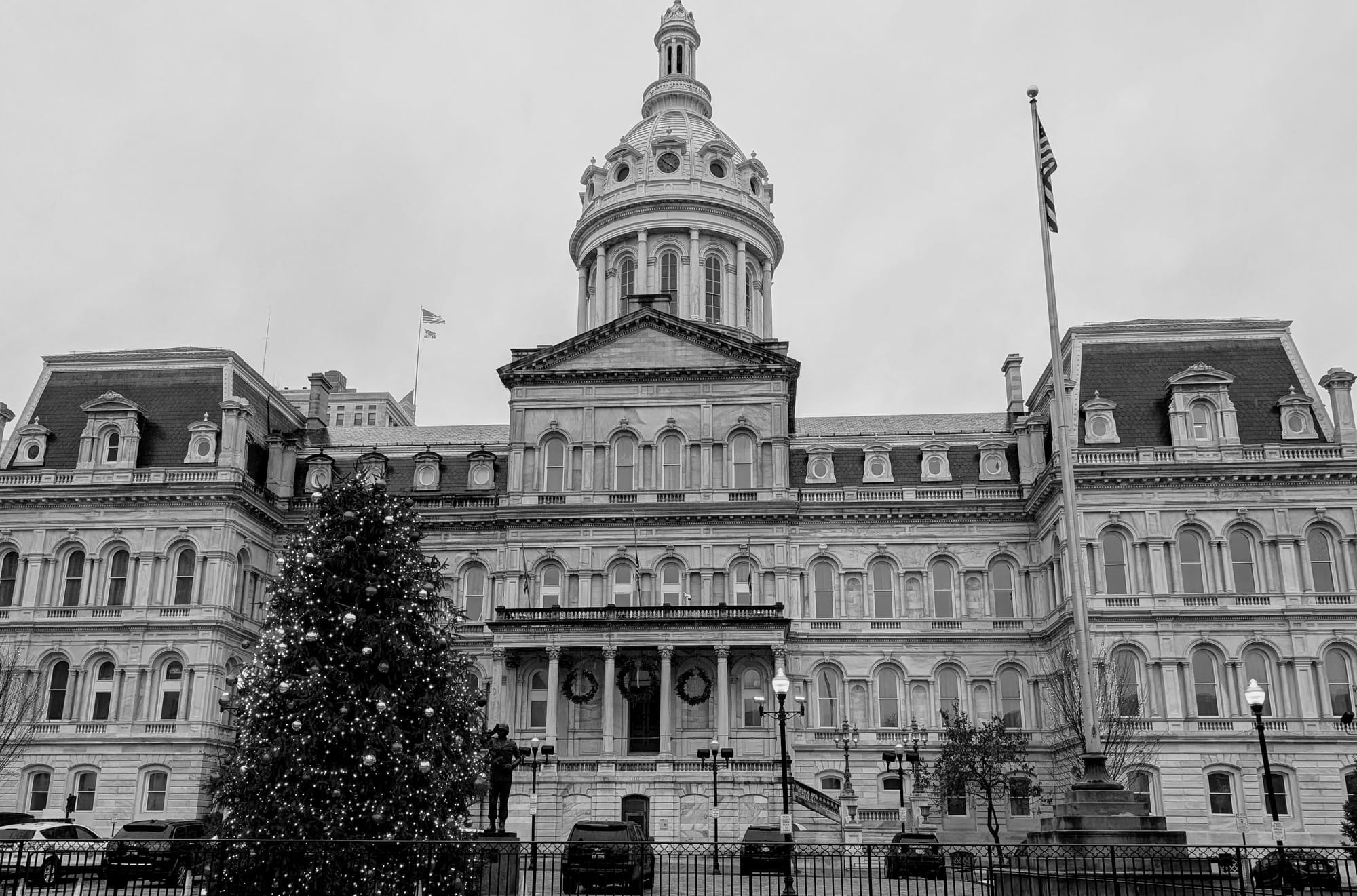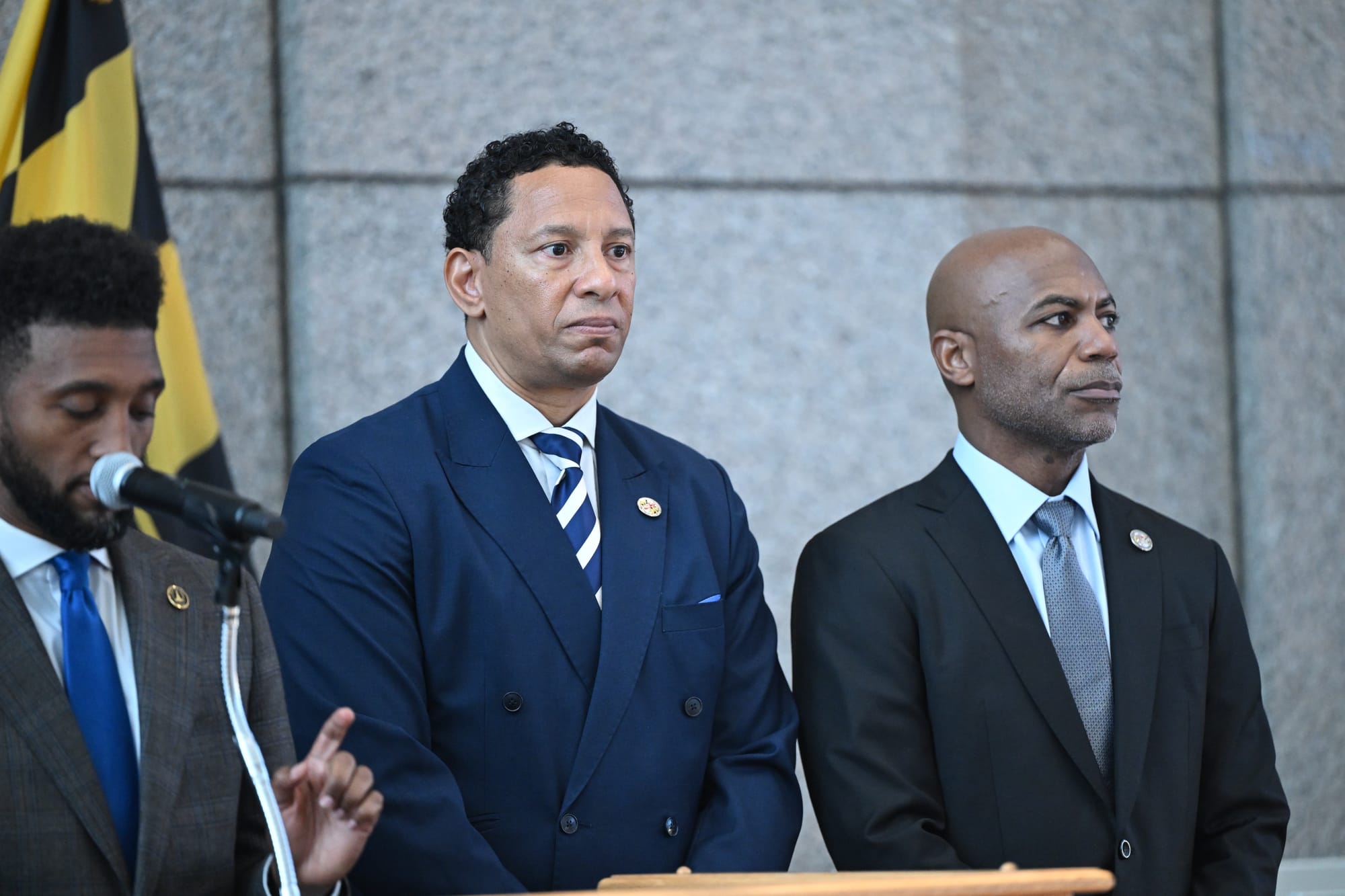
The ongoing government shutdown has created a crisis that threatens critical programs for at-risk populations, forcing city and state leaders to step up and tap nearly $15 million in emergency funding.
Baltimore is allocating $4.6 million for food, rental and child care assistance for furloughed federal workers and residents who rely on the Supplemental Nutrition Assistance Program. The state is preparing to use $10 million for food security programs. Although a federal judge ruled yesterday that President Donald Trump must release the SNAP funds he's been holding hostage, the scramble to infuse assistance programs with money was a last-ditch effort to help hundreds of thousands of people who stand to suffer.
"We're talking about folks having their food, housing, child care, and health care ripped away from them," Mayor Brandon Scott said in a statement. "While we don't have the funds to fill every gap left by the shutdown, we're going to do everything we can to support our residents."
One can't help but think — shouldn't these investments be the norm, rather than an exception during crises?
The rush to provide relief during the ongoing battle on Capitol Hill harkens back to the height of the COVID-19 pandemic. In response to its devastating impact on communities, government entities suddenly found some compassion for struggling residents.
Eviction moratoriums went into effect. Stimulus dollars were sent out. Prison populations were reduced. And that relief extended to those who use drugs, who are often left out of the discourse about emergency benefits.
Former State's Attorney Marilyn Mosby implemented a de facto decriminalization policy, which ended the prosecution of low-level drug offenses. Drug arrests continued to plummet during her tenure, keeping many drug users out of the cruel criminal "justice" system.
The federal government also increased access to medications for opioid use disorder, or MOUD. It did away with the X-Waiver program, vastly expanding doctors' abilities to prescribe buprenorphine, and it relaxed regulations to allow more take-home methadone doses.
Now, as the government shutdown surpasses the one-month mark, people will get some relief via increased investments in food and rental programs — including those who use drugs.
"We know many of the people who rely on these lifesaving benefits are the people we fight for, from those who struggle with addiction to those with drug convictions who are reentering society after incarceration," the Drug Policy Alliance said in a statement.
"For people who are struggling with addiction, it will create more hardship, which could lead to more drug use or a lapse in recovery. And for people returning home from jail or prison, it would be another barrier to keeping them out of the cycle of incarceration."
The recently announced investments are undoubtedly good things. But it shouldn't take a calamity for the government to do more to save lives.
Whether it's a public health crisis or a politically driven government shutdown, moments that put pressure on those in power often demonstrate that the people we elect can provide significantly more than they lead us to believe.
There is more money for social programs that keep people fed and housed. And politicians do, in fact, have the power to enact life-saving reforms.
But it's a question of political will, and leaders in Baltimore and beyond have shown that it is often lacking. Take, for example, the city's refusal to adopt overdose prevention centers despite recent mass overdose events and thousands of deaths over the past decade.
It's not a question of whether these things are possible — it's a matter of whether the people we elect want to meet the moment and do all they can for our most vulnerable neighbors.
We must demand more.

Last week's newsletter: "Opposition to methadone clinics is a deadly concession to Baltimore's NIMBYs"
Methadone clinics in Baltimore often get the boogeyman treatment. They play an integral role in harm reduction and treatment, yet elected officials and residents frequently characterize them as nuisances preying upon vulnerable neighborhoods.
That was again the case on Monday, when the Baltimore City Council considered a package of bills that proponents say would facilitate the building of additional housing and help rehabilitate the city's sea of vacant properties. During consideration of removing off-street parking requirements, Councilman James Torrence introduced an amendment to carve out an exemption for methadone clinics, also known as Opioid Treatment Programs, and residential treatment facilities. It was just the latest attack on clinics, which provide life-saving medication for opioid use disorder.
Read the full newsletter here.
Mobtown Redux's Overdose Data has been updated with the latest local, state and national data
There were 778 overdose deaths in Baltimore in 2024, a 25.4% decrease from the year prior, according to preliminary data.
In the 12-month period ending in September, Baltimore saw 536 deaths, a death rate of 91.5 per 100,000 people. Statewide, there were 1,296 deaths, a death rate of 21 per 100,000 people.
The data indicates that fatal overdoses continue to trend downward after years of climbing, though poor Black neighborhoods in West Baltimore continue to suffer the most.
Check out Mobtown Redux's Overdose Data Dashboard here.
Click here to learn more about harm reduction resources in the Baltimore area.
NC Health News: "Meet the UNC street drug scientist awarded a ‘genius’ grant for his lifesaving work"
At a time when the nation’s drug supply has become increasingly unpredictable, Nabarun Dasgupta uses what he calls “science in service” to bring some clarity to the chaos.
Dasgupta has spent two decades using data to tell the story behind street drugs and their hidden dangers. He documents how people use those substances as a way of reducing the harm done by them.
Dasgupta’s career has brought scientific rigor to the practice of harm reduction, an approach to drug use that seeks to minimize its ill effects while allowing users to stay alive and well, and receive support.
Click here to read the full article.









Comments